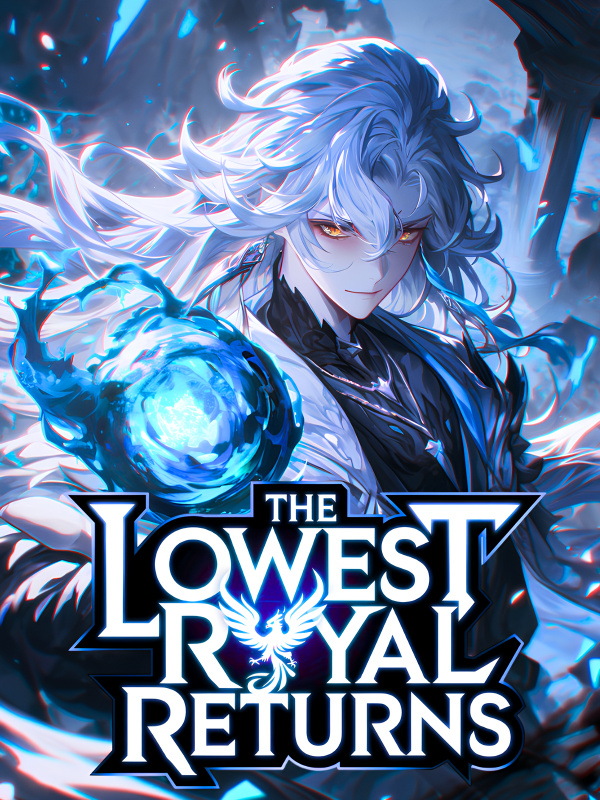©WebNovelPub
Apocalypse Shelter Administrator-Chapter 72: ERP
ERP
Enterprise Resource Planning. In Korean, it’s called 전사적 자원관리 (Enterprise Resource Management). It’s a system that integrates and manages resources that are scattered across different departments within a company.
For example, in factory operations, there are times when the boss wants to know the entire workflow, from materials to production, inventory, and distribution. With ERP, the boss can track all of this in real time from a single computer in their office without needing to call each department head.
In that sense, an ERP system is essential for the shelter. Here, even air is considered a resource. Depending on policies, even human corpses can be treated as resources.
Every element needs to interlock without any waste, and if anything falls short, the whole system collapses like dominoes. All resources and consumption must be meticulously planned!
However, due to various reasons, there are always discrepancies, so future plans must be frequently adjusted. The only one capable of managing this perfectly on the scale of a massive city is Artemis. She was created for city management on the Moon, an even more hostile environment than here, so handling this should be easy for her.
The overhead map viewed from a slightly tilted angle resembled the UI of a typical management simulation game. However, unlike a typical in-game city, this one is divided into three areas: upper, middle, and lower.
Additionally, it’s structured diagonally, burrowing underground from inside a large mountain, making it impossible to capture the entire view on one screen. If this were an actual game, there would probably be complaints about the view.
[I know exactly what you’re thinking. You’re thinking it looks like a game, right?]
“It looks so similar! If they showed this at E3, everyone would think it was a new game.”
I felt sad thinking about an event that would never be held again.
When I opened the construction tab, there were various category tags. Public safety, research, resources, production, disaster prevention, housing, leisure—buildings essential for city management were grouped by category. It also displayed the resources and construction time needed to build each structure.
Up to this point, it resembled a game, but this is reality. There were significant differences as well. For one, you couldn’t just build things instantly with materials like in a game; you had to account for the heavy equipment and power consumption involved.
“Oh, I can’t build here.”
When I tried to drop a Pilates studio from the leisure category into the shelter as a test, the building turned red, indicating it couldn’t be built.
[If you build it there, the slope for the sewage connection will be off. Also, the exhaust ducts will end up crossing the city space.]
Chloro explained.
Because infrastructure needs to be considered, the available spots for building are strictly limited.
[Wow, there’s even a mosque?]
Kiz commented while browsing the religious facilities included in the ‘leisure' category.
“There was a rich Middle Eastern investor.”
I recalled a VIP in a turban whom I’d often seen during construction progress reports.
Apart from the construction tab, there were also exploration, diplomacy, and policy tabs. Exploration supports tasks that bring in information, resources, and technology from outside the shelter, like when we visited the metacraft research facility.
Diplomacy deals with managing relationships, trade, support, and integration with survivor groups if they exist, though we haven’t used it yet and who knows if we ever will. Policy is essentially the alpha and omega of this system.
[It encompasses so many desires and ethical dilemmas that it had to be vast. And this is the condensed version.]
It’s the section where countless detailed rules concerning the residents’ lives are decided.
[For example, you can decide to what extent you’ll allow certain indulgences for the residents.]
When the policy tab was selected, dozens of large categories appeared, and I chose ‘indulgences.' From there, countless items branched out from indulgences.
Artemis selected one of the items.NIt was cigarettes. The icon showed two fingers forming a V-shape, holding a cigarette between them.
Now I’m leaving. Please don’t smoke.
– Yul Brynner (Said while dying of lung cancer)
A large title and a short description like something you’d see in a game appeared. The description felt a bit malicious, but cigarette ads were always like that, so I let it slide.
Like in construction simulation games, the policies also had accompanying illustrations. The one for cigarettes depicted women gathered in groups, smoking at a worksite in the shelter. But cigarette butts and packs were littered everywhere.
Torn cigarette films scattered like fallen leaves, and the spit one woman exhaled traced a silver arc through the air.
“Hmmm.”
I glanced at Artemis with some suspicion, but she showed no reaction. At the bottom of the illustration, all relevant information about cigarettes was displayed. The first thing that caught my eye was the word “banned” written in red letters.
In reality, cigarettes weren’t supplied in the shelter. Beyond that, there were also details on cigarette stock, production lines, required consumables, daily production capacity, and quality upgrade research.
[Hover over the ‘banned’ part.]
When I did, a list of buildings that would need to be constructed and the pros and cons of allowing cigarette distribution appeared.
* Pros
◇ Reduces residents' stress.
◇ Can partially substitute for currency.
◇ Provides slight prevention against stomatitis.
* Cons
◆ Incur costs for the construction and maintenance of numerous smoking booths.
◆ Exhaust filter life shortens more rapidly.
◆ Increased consumption of medical supplies for internal medicine.
◆ Increased consumption of medical supplies for surgery.
◆ Increased consumption of dental supplies.
◆ Increases radiation exposure for all residents.
◆ Cityscape gets polluted with cigarette ash, butts, plastic, and cigarette packs.
◆ If recycling is allowed, the quality of usable organs deteriorates.
◆ Continuous work delays due to smoke breaks.
◆ Fire hazard increases significantly.
◆ Greater likelihood of drainage and sewage blockages.
Indeed, this is so typical of our city’s approach. It doesn’t focus on the health of smokers but rather on the strict management of resources and costs in running the city. Clicking on the exhaust filters or medical supplies would provide detailed information.
“Still, doesn’t this feel a bit biased?”
I looked up at Artemis beyond the screen in front of me, but she was unfazed.
[What?]
“You’re the one who analyzed all these UI elements and pros and cons anyway.”
[What?]
“Just admit it—you don’t like the idea of cigarette ash and smoke floating around the city.”
It would be hard for Artemis, with her personality, to tolerate the sight of smokers polluting various parts of the city. However, if I, the administrator, approve it, she has no choice but to allow it. That’s why it seems like she’s set things up this way, using the tutorial as an excuse to remind me, so I don’t feel inclined to approve it.
[Without exaggeration or distortion, it's 100% accurate. The saying that cigarettes are harmful with no benefit didn’t come out of nowhere. I’d appreciate it if you valued my effort to squeeze out whatever small merits there are to keep things balanced. Just don’t accuse me of lobbying based on personal bias.]
"Okay, okay. Calm down."
I soothed her as she quickly rattled off her words. It was funny that, biased or not, her heavily skewed pros and cons list was impossible to refute.
“I’m not planning to approve cigarettes as supplies either. I don’t want that filth scattered around our shelter. However, I’m thinking of allowing smoking in restricted areas as a form of reward.”
If it helps with control, I’ll use whatever I can. Besides, it’s a waste to let all the cigarettes stockpiled in the warehouse rot. I was planning to trade them with any surviving external groups, but that seems unlikely.
[From a stress management perspective, I’d rather recommend loosening up on alcohol.]
Her tone softened somewhat as she spoke.
The alcohol tab featured an icon alternating between a can and a bottle, with an illustration of a woman in work clothes holding a beer can in the break room. Her sweat-drenched outfit and the drops of sweat running down her toned muscles, as well as her gulping throat, were quite suggestive despite the lack of explicit exposure.
“Can you even predict this kind of stuff?”
I pointed to one of the items. It was a quantified explanation of the psychological changes residents would undergo according to that policy. Stress, happiness, and loyalty were the three metrics.
For example, allowing regular alcohol rations significantly reduced stress while increasing happiness and loyalty. This isn’t a game, so is it really possible to quantify things like that?
[In this place, it’s possible.]
Artemis brought up a small window showing a population graph categorized by alcohol and tobacco consumption.
[With complete surveys of drinkers, non-drinkers, smokers, and non-smokers, I can accurately predict how many people will approve of a policy decision. But that's not all.]
Medical examinations, daily behavior, and conversations were closely analyzed to determine how much someone desired certain items.
[Based on extensive observational data, I can predict individual desires and how cooperative they’ll be if those desires are fulfilled.]
She pulled up the profiles of 10 random residents. Along with mugshots, detailed information about their physical condition, personality, health, and relationships appeared. Below that was a magnifying glass icon, which, when a specific policy was entered, displayed their predicted reactions in detail, depending on whether the policy was approved or not.
Seeing this, I was left speechless. I knew the shelter’s surveillance system was at a Big Brother level, but I didn’t expect it to be this precise.
[I’ve designed the UI in a way that allows you to easily grasp the city’s status at a glance, making it intuitive and simple. Intuition and simplicity are the virtues of game developers.]
As she said, this ERP system reminded me of a construction management simulation game at first glance.
[Thanks to that, it may look like a game, but remember, this isn’t a game. There are no saves or loads. A few clicks can drastically change the lives of many people in an instant. From the small joys of daily life to irreplaceable major happiness, you can take it away or grant it.]
“Don’t worry. I fully understand the meaning behind what you’re trying to say.”
I was a former soldier.
“With just a gesture or a word from my superior, I had to crawl into the death pit of bullets and shrapnel. Later, I was the one ordering my subordinates to do the same.”
That wasn’t all.
“When I ordered drone strikes, I saw enemy troops crawling on the ground like ants through thermal maps, wiping them out like mirages.”
Back then, even though I had killed many people in an instant, it didn’t feel real at all.
“I’m fully aware of the weight and responsibility of making life-and-death decisions with just a few simple gestures.”
[Good, that’s all I needed to hear.]
That day, I reviewed the major policy items with the support of the AIs. The term "policy" might usually sound rigid, but the management tools she provided were easy to understand while offering plenty of information.
Most items were optimally set by default, so I didn’t have much to adjust, aside from contemplating the ethical issues we might face in the future. Some examples were how to handle corpses or the limits on the security forces’ use of physical force.
After careful consideration, I checked off each item and decided to put some up for a vote. Thus, the most cautious day since the recovery of the shelter came to an end.







